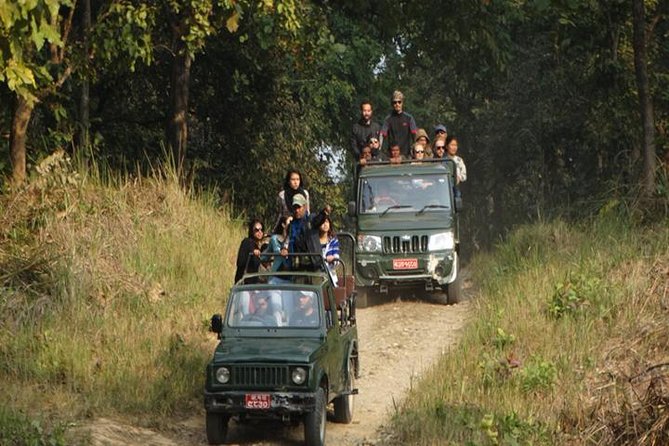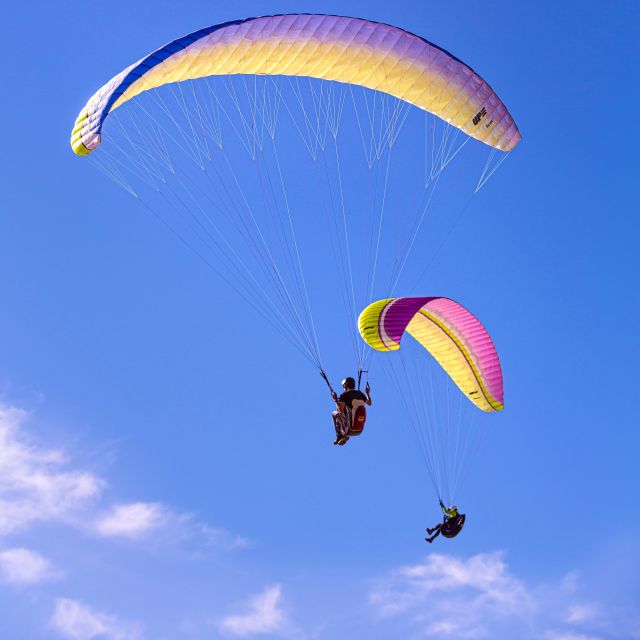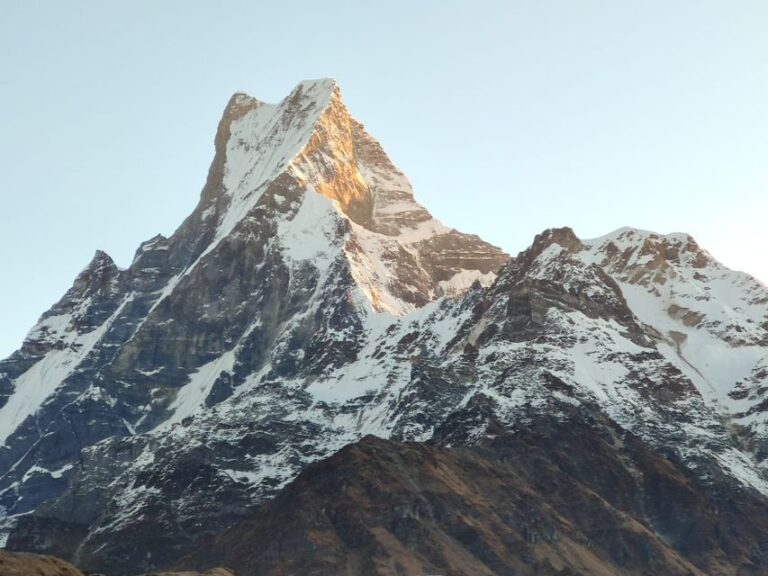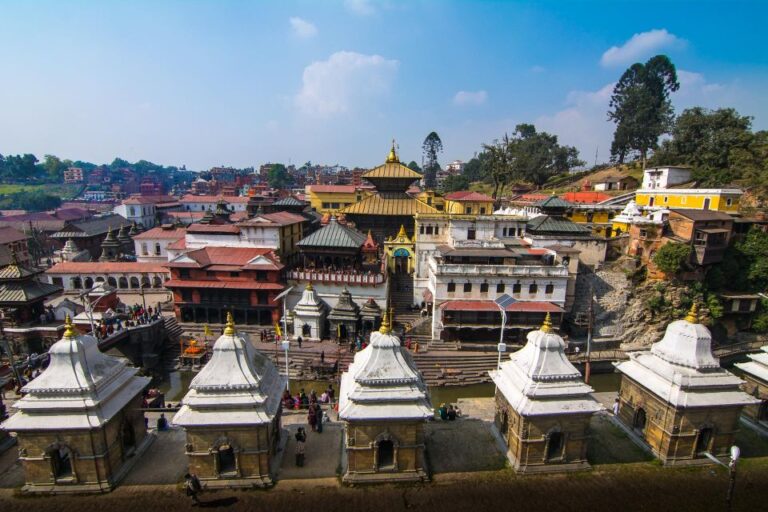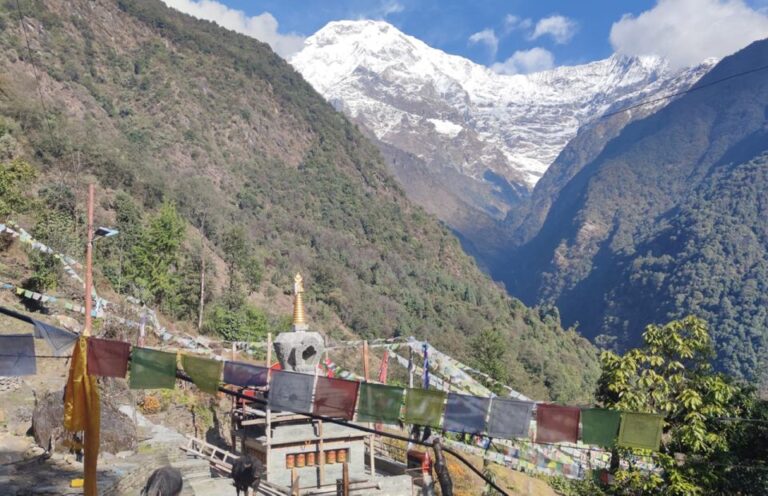Annapurna Trekking
Nestled in the heart of the Himalayas like a gem waiting to be discovered, Annapurna trekking offers a transformative journey through breathtaking landscapes and rich cultural experiences. As trekkers lace up their boots and set foot on this iconic trail, they are met with a tapestry of natural wonders and local traditions waiting to be explored.
But what lies beyond the surface of this majestic adventure? Stay tuned to uncover insider tips, unforgettable moments, and practical advice that will elevate your Annapurna trekking experience to new heights.
Just The Basics

- Best Time: Trek in March-May or Sept-Nov for stable weather.
- Essential Packing: Layered clothing, sturdy boots, waterproof jacket, sleeping bag.
- Accommodation Options: Tea houses, camping, cozy lodges along the trail.
- Safety First: Acclimatize, stay hydrated, carry medications, know emergency contacts.
It's also worth checking out some other tours and experiences nearby.
Best Time to Trek Annapurna
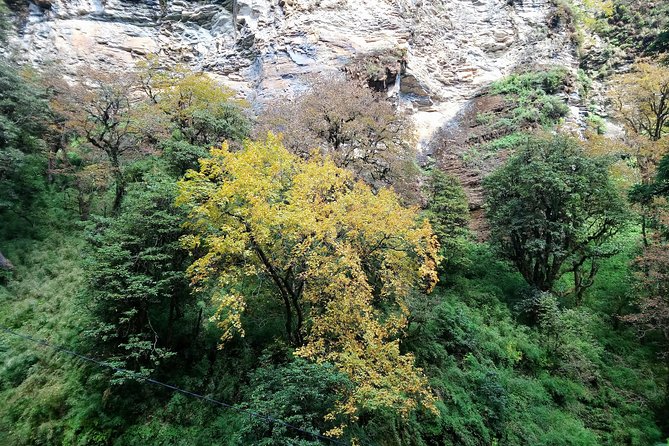
For those planning to embark on the Annapurna trek, choosing the best time to go is crucial for a memorable and enjoyable experience. Weather conditions play a significant role in determining the ideal trekking season. The best time to trek Annapurna is during the pre-monsoon (spring) months of March to May or the post-monsoon (autumn) months of September to November. During these periods, the weather is relatively stable, with clear skies and moderate temperatures, making it perfect for trekking.
Plus, these seasons help minimize the risk of altitude sickness, a common concern due to the high elevations encountered along the trail. Proper acclimatization, staying hydrated, and gradual ascent are essential to prevent altitude sickness and ensure a safe trekking experience.
Essential Packing List for Trekkers
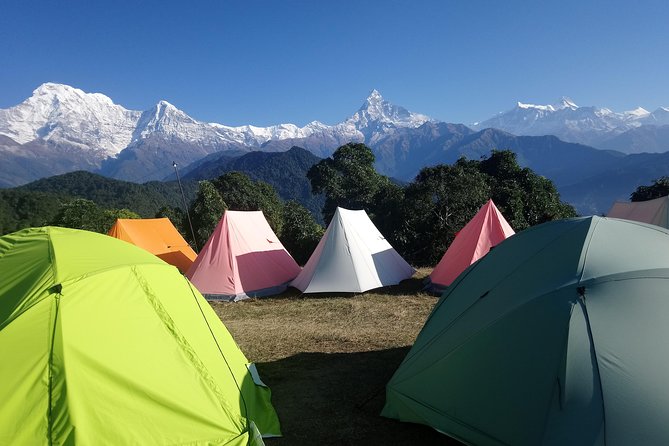
Packing efficiently is essential for trekkers venturing on the Annapurna circuit, ensuring they’ve all necessary gear for a safe and enjoyable journey. While trekking in the Annapurna region, it’s crucial to be prepared for various weather conditions and terrains.
Here are some gear recommendations to consider:
- Layered Clothing: Be ready for temperature fluctuations.
- Sturdy Hiking Boots: Ensure good ankle support on rocky paths.
- Waterproof Jacket: Shield against rain or snow.
- Sleeping Bag: Stay warm in high-altitude teahouses.
- First Aid Kit: Essential for minor injuries along the trail.
With changing weather conditions in the Himalayas, having the right gear can make a significant difference in the overall trekking experience.
Top Accommodation Options on the Trail
Navigating the Annapurna trail offers trekkers a diverse range of top accommodation options catering to various preferences and budgets. For those seeking a more traditional experience, tea houses are a popular choice along the trail. These cozy lodges provide basic amenities such as a bed, warm meals, and a chance to interact with fellow trekkers.
On the other hand, camping options are also available for those looking to enjoy nature fully. Trekkers can set up camp at designated sites, enjoying the breathtaking views and tranquility of the mountains. Whether opting for the comfort of a tea house or the adventure of camping, the Annapurna trail ensures that trekkers have a place to rest and rejuvenate amidst the stunning Himalayan landscape.
Local Cuisine and Dining Recommendations
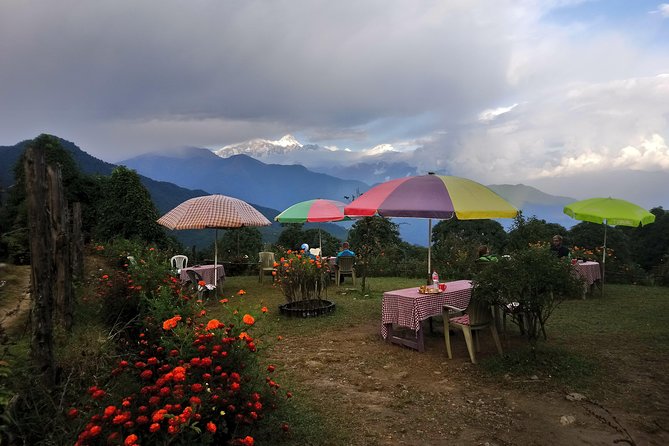
When exploring the Annapurna trail, travelers are encouraged to savor the local cuisine and embrace dining recommendations that showcase the rich flavors of the region.
The culinary experiences along the trek offer a glimpse into the vibrant food culture of the area, providing a unique opportunity to indulge in traditional dishes and local delicacies.
Here are some dining recommendations to enhance your trekking experience:
- Try Dal Bhat: A staple dish consisting of rice, lentil soup, and vegetables.
- Sample Momos: Delicious dumplings filled with meat or vegetables, often served with a spicy sauce.
- Enjoy Thukpa: A hearty noodle soup with vegetables and sometimes meat, perfect for warming up.
- Taste Yak Cheese: A local specialty that adds a unique flavor to various dishes.
- Sip on Butter Tea: A warm beverage made with tea leaves, butter, and salt, offering a distinctive taste of the region.
Safety Tips for Annapurna Trekkers
As travelers venture along the Annapurna trail, prioritizing safety is paramount to ensure a smooth and enjoyable trekking experience. Altitude sickness is a significant concern due to the high elevations reached during the trek. To mitigate this risk, it’s crucial for trekkers to acclimatize properly by ascending gradually and staying hydrated.
Carrying essential medications and being aware of symptoms can help in early detection and treatment. Plus, having emergency contacts readily available is vital in case of any unforeseen circumstances. Trekkers should ensure they have access to local emergency services and know the procedures to follow in case of an emergency.
Here's a few more nearby tours and experiences we think you'll like.
Frequently Asked Questions
Are There Any Age Restrictions for Annapurna Trekking?
There are age restrictions for certain activities due to safety concerns. Travelers should be aware of health precautions and any physical fitness requirements. It’s essential to check the guidelines before booking to ensure a safe and enjoyable experience.
Is It Possible to Rent Trekking Gear Along the Trail?
Gear rental options are usually available along the trail through trailside vendors. Travelers can find essential trekking gear for rent, making it convenient for those who prefer not to carry their own equipment throughout the journey.
Are There Any Medical Facilities Available Along the Annapurna Trail?
Medical facilities and emergency services are essential for any trekking adventure. Travelers should inquire about the availability of these services beforehand to ensure safety. It’s crucial to be prepared for any potential medical needs.
Can I Bring My Own Food for the Trek or Do I Need to Rely on Local Cuisine?
Travelers can bring their own food for the trek, offering flexibility in food options and catering to personal preferences. Packing snacks can support sustainability and dietary needs, ensuring a comfortable and enjoyable trekking experience.
Are There Any Cultural Etiquette Tips That Trekkers Should Be Aware of While on the Annapurna Trail?
Travelers should be mindful of cultural customs to show respect. Appropriate clothing choices are essential. Understanding local traditions, greeting practices, and customs can enhance the experience. Being culturally sensitive adds value to the trekking adventure.
Not for you? Here's more of our most recent tour reviews happening neaby
- Upper Mustang Trekking – 15 Days
- Everest Helicopter Tour: Experience the Ultimate Aerial Adventure of a Lifetime
- 12 Days Annapurna Circuit Trek
- Private Half-Day Off-Road Safari in Shivapuri-Nagarjun Park – Kathmandu
- Nepal Multisport Adventure Tour
- 7 Days Honeymoon Tour in Nepal
- Nepal Cultural & Adventure
- Bandipur Homestay Tour
- Tibet Tour With Everest Base Camp – FLY IN DRIVE OUT- 8 DAYS
- Day Hiking Near Kathmandu Valley.
- 4 Days Langtang Valley Short Trek
- 12 Days Everest Base Camp Trek in Nepal
- Lobuche East Peak Climb With Everest Base Camp Trek
- 4-Day Kathmandu Valley UNESCO World Heritage Sites Tour
- UNESCO World Heritage Site Tour in Kathmandu
Final Words
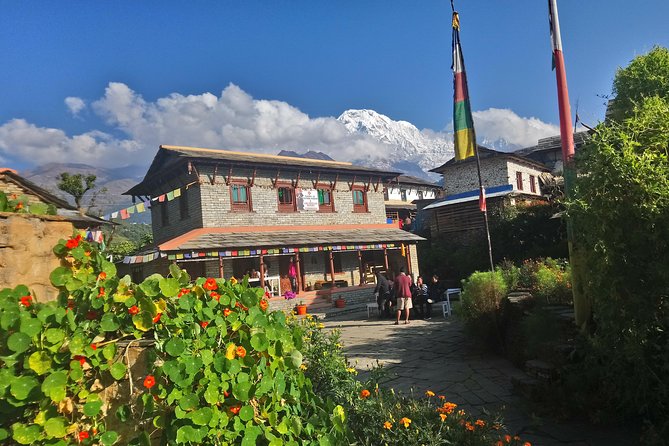
Embark on the adventure of a lifetime with Annapurna trekking, where breathtaking landscapes and rich cultural experiences await. By choosing the best time to trek, packing essential items, and staying in top accommodation options, you can ensure a safe and enjoyable journey.
Remember to savor local cuisine, follow safety tips, and learn about the beauty of the Annapurna region.
Plan your trek with confidence and excitement, and create memories that will last a lifetime.
